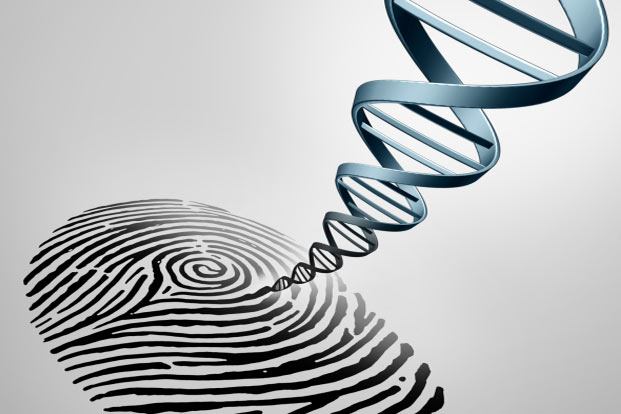Baseball great Mickey Mantle’s father died at age 40 from Hodgkin’s disease. The early death haunted Mantle all his life, and many felt his battle with alcohol may have been a way of self-medicating to deal with grief and the fear that he was susceptible to the same disease.
Mantle himself had a humorous take on his condition in his 50s, having surpassed his father’s age – “If I had known I was going to live this long, I would have taken better care of myself.”
That grim humor was Mantle’s reaction to the sword of Damocles presented by an inheritable disease. But not everyone deals with the prospects of getting a deadly disease so cavalierly. Some live lives filled with dread, while others become adventurers, taking serious risks in the belief that they are living on borrowed time.
Researchers estimate there are more than 7,000 different types of rare diseases and disorders, with 30 million people in the United States having a condition. That’s roughly 10 percent of the United States population, and while that sounds like a huge number, each of the so-called rare diseases are usually afflicting a relatively small portion of the population. A disease is called a rare disease if less than 200,000 people in the United States are afflicted.
WHAT IS RARE?
The rare disease field is typically confined to about 350 rare diseases, which account for about 80 percent of all cases. These include such well-known conditions as:
While the cause of most of these diseases is believed to be genetic, there are also environmental triggers attached to some. Diets deficient in certain vitamins and minerals, anemia issues that deplete the body of vitamins and minerals, and things like asbestos exposure can bring on certain conditions. Smoking and a bad diet are also factors, and while they are not the proximate cause, they can work in tandem with whatever factors cause the rare disease.
The genetic component to rare diseases is believed to stem from imperfections in a single gene. That may explain why so few people acquire certain rare diseases and why cures for them remain so elusive. What is known is that the genetic issues can be passed to future generations. Once someone in a family tree has a rare disease, the risks of future offspring getting it are increased, although there is no guarantee that any one individual will have it. But even those who don’t acquire the rare disease can still pass the defective gene along to their offspring.
GRIM STATISTICS
Most rare diseases have no cure. Worse, some diseases have no apparent cause, and some patients present with symptoms so rare that they baffle medical professionals at first. These undiagnosed conditions can be extremely frustrating for families, who watch loved ones struggle and doctors unable to do more than guess on things that may be effective in at least limiting some of the symptoms.
The World Health Organization estimates that 350 million people worldwide have a rare disease. That total would make patients into the world’s third-largest country if they were combined on a single landmass.
For reasons that are unclear, some 50 percent of rare disease sufferers are children. However, because rare diseases are genetic, they can strike at any point in life. Yet those that afflict children not only evoke the greatest sympathy, but they are among the deadliest, killing 35 percent of afflicted children during their first year of life.
RARE DISEASE RESEARCH
While some 95 percent of rare diseases currently have no cure, there is ongoing medical research providing hope. Unfortunately, some rare diseases, termed “orphan diseases,” have no current research going on. This has mostly been attributed to the lack of profit potential in drugs that can present a cure, given the small audience. Drugs take a long time to develop and gain approval from regulators, so pharmaceutical companies focus on potential blockbusters that can sustain the company pipeline.
However, new biopharmaceutical companies are emerging that hope to capitalize on ways to deal with certain rare diseases. Their rise and new breakthroughs in gene therapy offer hope to rare diseases sufferers and their families.
One incentive to work on more orphan drugs is coming from the United States government. The Orphan Drug act of 1983 promised tax incentives and other benefits for pharmaceutical companies that engaged in rare disease research. More than 325 new drugs have emerged since that law was passed.
Also pushing rare disease research is the National Institutes of Health. The NIH Therapeutics for Rare and Neglected Diseases program has created a research pipeline that helps smaller companies work with larger companies and institutes in the effort to find cures for orphan drugs. This new initiative is being overseen by the Office of Rare Diseases Research, part of the National Human Genome Research Institute.
PATIENT INFORMATION
Those afflicted with a rare disease or who are supporting a family member stricken with one can get more information online at the Genetic and Rare Diseases Information Center. The site offers a searchable database at rarediseases.info.nih.gov/GARD that will provide the latest research, and there are individual consultations available via fax, phone and postal mail.
Many rare diseases have online support groups that stay in touch with the latest research information and can pass along tips on coping with a disease’s physical and psychological ramifications. Similarly, there are non-profit groups that are focused on particularly diseases. There is also the overall National Organization for Rare Diseases and the Genetic Alliance.
Stem cell research and ongoing understanding of our genetic makeup provides hope that someday, a cure for most diseases will be found. Until that day arrives, families and individuals will have to cope when they are fighting against rare diseases.

Leave a Reply